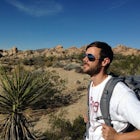Camping at Paso Picacho
Julian, California
Description
This is a new adventure! Be the first to share your experience.
Join a supporting community of travelers and adventurers sharing their photos and local insights.
Added by Kenny Melton
Great for families and hikers. Hikers: Stonewall (2 miles) and Cuyamaca Peak (3.5 miles). Both mountain and ocean views (depending on campsite). Hike to Lake Cuyamaca as well.
Paso Picacho, 5 miles north of Cuyamaca Rancho State Park, sits at an elevation of 5,000 feet. The most popular hikes start from this camp, including the 2 mile hike up Stonewall Peak (elevation 5,700 feet), and the 3.5 mile hike up Cuyamaca Peak (elevation 6,512 feet), both which offer breathtaking views of the deserts to the east, the coast to the west, and Lake Cuyamaca at the bottom. Lake Cuyamaca, operated by the Helix Water District, is two miles north of Paso Picacho and offers boating and fishing. Paso Picacho campground has 85 campsites. Reserve your campsite here.
Day-use visitors may use the picnic areas provided at the campgrounds for $8 per vehicle. The receipt is good for the entire park for the day. The picnic areas offer tables, restrooms, and BBQ's. Visitors may also park in legal turnouts along the highway and hike for free. Fire is not allowed anywhere except in the developed picnic areas and campgrounds.
The beautiful park offers camping and hiking in an oak woodland forest, with a sprinkling of pines and lovely meadows with creeks. There are over 100 miles of trails which can accommodate every skill level.
Tip:
Best Campsites: 8, 22, 36, 52, 62, and 65. Also book early to reserve the prime spots during peak Summer and Fall months.
Download the Outbound mobile app
Find adventures and camping on the go, share photos, use GPX tracks, and download maps for offline use.
Get the appFeatures
Camping at Paso Picacho Reviews
The loop of sites 5-10 provides the most privacy, as well as a shortcut to Cuyamaca Peak trail. $30/night, flush toilets, showers.
Leave No Trace
Always practice Leave No Trace ethics on your adventures and follow local regulations. Please explore responsibly!
Nearby
Hike Cuyamaca Peak
Hike Stonewall Peak
Green Valley Falls
Three Sisters Falls
Hike Garnet Peak Trail
Big Laguna Lake Loop
Community
© 2024 The Outbound Collective - Terms of Use - Privacy Policy









